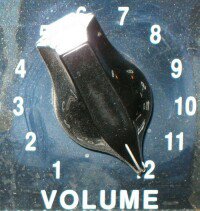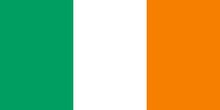
“Dante had two brushes in her press. The brush with the maroon velvet back was for Michael Davitt and the brush with the green velvet back was for Parnell.”
- - Portrait of the Artist as a Young Man – James Joyce
Charles Stewart Parnell (27 June 1846 – 6 October 1891) was an Irish political leader and one of the most important figures in 19th century Ireland and the United Kingdom; William Ewart Gladstone described him as the most remarkable person he had ever met. A future Liberal Prime Minister, Herbert Henry Asquith, described him as one of the three or four greatest men of the nineteenth century, while Lord Haldane described him as the strongest man the British House of Commons had seen in 150 years.
Parnell was first elected to the House of Commons (The lower level of British legislature), as a Home Rule League MP for Meath, on April 21, 1875. He soon associated with the more radical wing of the party, which included Joseph Biggar (MP for Cavan from 1874), Edmund Dwyer Gray (MP for Tipperary from 1877), F. H. O'Donnell (MP for Dungarvan from 1877) and John O'Connor Power (MP for County Mayo from 1874) and engaged in a policy of obstructionism (i.e., the use of technical procedures to disrupt the House of Commons's ability to function) to force the House to pay more attention to Irish issues, which had heretofore been ignored.
Biggar and O'Connor Power also had links with the Irish Republican Brotherhood, a physical force Irish organisation that had mounted a disastrously inept attempt at rebellion in 1867. The question of Parnell's closeness to the IRB, and whether indeed he ever joined the organisation, has been a matter of academic debate for a century. The evidence suggests that later, following the signing of the Kilmainham Treaty, Parnell did take the IRB oath, possibly for tactical reasons.[3]
Biggar and O'Connor Power also had links with the Irish Republican Brotherhood, a physical force Irish organisation that had mounted a disastrously inept attempt at rebellion in 1867. The question of Parnell's closeness to the IRB, and whether indeed he ever joined the organisation, has been a matter of academic debate for a century. The evidence suggests that later, following the signing of the Kilmainham Treaty, Parnell did take the IRB oath, possibly for tactical reasons.[3]
What is known is that IRB involvement in the League's sister organisation, the Home Rule Confederation of Great Britain, led to the moderate Butt's overthrow from its presidency (even though he had founded the organisation) in 1877 and the election of Parnell in his place.[4]
Parnell fundamentally changed the Home Rule League. He restructured it from top to bottom, creating a well-organised grass roots structure and membership to replace the League's previous informal grouping, in which MPs regularly voted differently on issues or did not come to the House of Commons at all. In 1882 he changed its name to the Irish Parliamentary Party and in 1884 imposed a strict party oath obliging its MPs to vote en bloc. The creation of a strict party whip and formal party structure was unique in politics. The Irish Parliamentary Party is generally seen as the first modern British political party, its efficient structure and control contrasting with the loose rules and informality found in the main British parties, who came to model their party structures on the Parnellite model.
Parnell fundamentally changed the Home Rule League. He restructured it from top to bottom, creating a well-organised grass roots structure and membership to replace the League's previous informal grouping, in which MPs regularly voted differently on issues or did not come to the House of Commons at all. In 1882 he changed its name to the Irish Parliamentary Party and in 1884 imposed a strict party oath obliging its MPs to vote en bloc. The creation of a strict party whip and formal party structure was unique in politics. The Irish Parliamentary Party is generally seen as the first modern British political party, its efficient structure and control contrasting with the loose rules and informality found in the main British parties, who came to model their party structures on the Parnellite model.
Parnell's unified Irish block came to dominate British politics, making and unmaking Liberal and Conservative governments in the mid-1880s as it fought for home rule (internal self government within the United Kingdom of Great Britain and Ireland) for Ireland. In the mid 1880s, Liberal Party leader William Ewart Gladstone committed his party to support for the cause of Irish Home Rule, introducing the First Home Rule Bill in 1886. However the measure failed to pass the British House of Commons, following a split between pro- and anti-home rulers within the Liberal Party.
Though home rule was a central demand of the Irish Parliamentary Party, it also campaigned for Irish land reform. In its campaign, some of its members worked closely with an organisation known as the Irish National Land League.
Parnell was elected president of the Land League on 21 October 1879. In January 1880, together with John Dillon, he visited the United States to raise funds and awareness for the Land League. On 2 February 1880 he addressed the House of Representatives on the state of Ireland.
The association with the Land League led various members, including John Dillon, Tim Healy, William O'Brien, Willie Redmond and Parnell himself to serve periods in prison. The agitation led to the passing of a series of Land Acts that over three decades changed the face of Irish land ownership, replacing large Anglo-Irish estates with tenant ownership.
In 1882, Parnell dissolved the Land League, and founded the National League to campaign on broader issues.
In 1882, Parnell dissolved the Land League, and founded the National League to campaign on broader issues.
Parnell was viewed as an Irish national hero, referred to as the Uncrowned King of Ireland, a term originally coined to describe Daniel O'Connell. However, Parnell's triumph was shortlived. It was soon 'revealed' (though it had been widely known among politicians at Westminster) that Parnell had been the long term partner, and father of three of the children, of Katharine O'Shea, also known subsequently as Kitty.[7] She was the wife of a fellow Galway MP, Captain Willie O'Shea, who had started divorce proceedings after failing to secure a large inheritance due to his wife.
Parnell's reputation was high but the scandal crippled this support. As a direct consequence of the O'Shea divorce, the Unionist movement in Ulster gained strength, as they espoused puritan values and they began to see the Home Rule movement as "morally wrong". Parnell refused to resign, leading to a party split between Parnellites and Anti-Parnellites.
Parnell was deposed as leader and fought a long and bitter campaign for re-instatement. He conducted a political tour of Ireland to regain popular support, attracting Fenian "hillside men" to his side. He married Katharine on 25 June 1891 in Steyning, West Sussex, on which day the Roman Catholic Church hierarchy issued a near-unanimous condemnation of his conduct (only Edward O'Dwyer of Limerick withheld his signature).[12] He lost the support of the Freeman's Journal. On the difficult campaign trail he had quicklime thrown at his eyes by a hostile crowd in Castlecomer, County Kilkenny. Fr. PJ Ryan, a Land League protagonist, immediately called in medical aid, which was given him by his brother, Dr Valentine Ryan of Carlow Town, a Home Rule sympathiser. On 27 September Parnell addressed a crowd in pouring rain at Creggs on the Galway–Roscommon border and contracted pneumonia.
Parnell's reputation was high but the scandal crippled this support. As a direct consequence of the O'Shea divorce, the Unionist movement in Ulster gained strength, as they espoused puritan values and they began to see the Home Rule movement as "morally wrong". Parnell refused to resign, leading to a party split between Parnellites and Anti-Parnellites.
Parnell was deposed as leader and fought a long and bitter campaign for re-instatement. He conducted a political tour of Ireland to regain popular support, attracting Fenian "hillside men" to his side. He married Katharine on 25 June 1891 in Steyning, West Sussex, on which day the Roman Catholic Church hierarchy issued a near-unanimous condemnation of his conduct (only Edward O'Dwyer of Limerick withheld his signature).[12] He lost the support of the Freeman's Journal. On the difficult campaign trail he had quicklime thrown at his eyes by a hostile crowd in Castlecomer, County Kilkenny. Fr. PJ Ryan, a Land League protagonist, immediately called in medical aid, which was given him by his brother, Dr Valentine Ryan of Carlow Town, a Home Rule sympathiser. On 27 September Parnell addressed a crowd in pouring rain at Creggs on the Galway–Roscommon border and contracted pneumonia.
He returned to Dublin, thence to Brighton, departing by the mail boat, 30 September. ("I shall be all right. I shall be back next Saturday week"); He died of heart attack brought on by rheumatic fever, near midnight, 6 October in his and Katharine's home in Brighton. Though an Anglican, he was buried in Dublin's largest Roman Catholic cemetery, Glasnevin. Such was his reputation that his gravestone of unhewn Wicklow granite, erected in 1940, [13] carries just one word in large lettering: PARNELL.






No comments:
Post a Comment